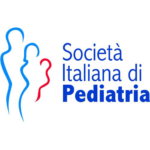
Do not substitute careful hand hygiene for just wearing gloves. (Green recommendation)
In neonatal and pediatric settings, surgical site infections (SSIs) occur in 2-10% of surgical procedures and are associated with prolonged hospitalization, increased mortality, and increased costs to the health care system. Most SSIs are acquired in the operating room and in more than 50% of cases are preventable. Hand hygiene and proper use of gloves are the fundamental practice to prevent their occurrence. Hand hygiene should be performed before and after patient contact, before handling medical devices whether or not gloves are used, after contact with biological fluids or secretions, mucous membrane, nonintact skin, or wound dressings, when in the course of care one moves from one contaminated body site to another of the same patient, after contact with contaminated surfaces and objects in the immediate vicinity of the patient, after removing sterile or nonsterile gloves, and before handling medications or preparing food. The use of gloves is never a substitute for and should be associated with hand disinfection.
Sources
1. Boyce JM, Pittet D; Healthcare Infection Control Practices Advisory Committee; HICPAC/SHEA/APIC/IDSA Hand Hygiene Task Force. Guideline for Hand Hygiene in Health-Care Settings. Recommendations of the Healthcare Infection Control Practices Advisory Committee and the HICPAC/SHEA/APIC/IDSA Hand Hygiene Task Force. Society for Healthcare Epidemiology of America/Association for Professionals in Infection Control/Infectious Diseases Society of America. MMWR Recomm Rep. 2002 Oct 25;51(RR-16):1-45.
2. Leaper D, Burman-Roy S, Palanca A, et al. Guideline Development Group. Prevention and treatment of surgical site infection: summary of NICE guidance. BMJ. 2008 Oct;337:a1924.
3. WHO Guidelines on Hand Hygiene in Health Care: First Global Patient Safety Challenge Clean Care Is Safer Care. Geneva: World Health Organization; 2009.
Download
PDFAttention. Please note that these items are provided only for information and are not intended as a substitute for consultation with a clinician. Patients with any specific questions about the items on this list or their individual situation should consult their clinician.


Recent Comments